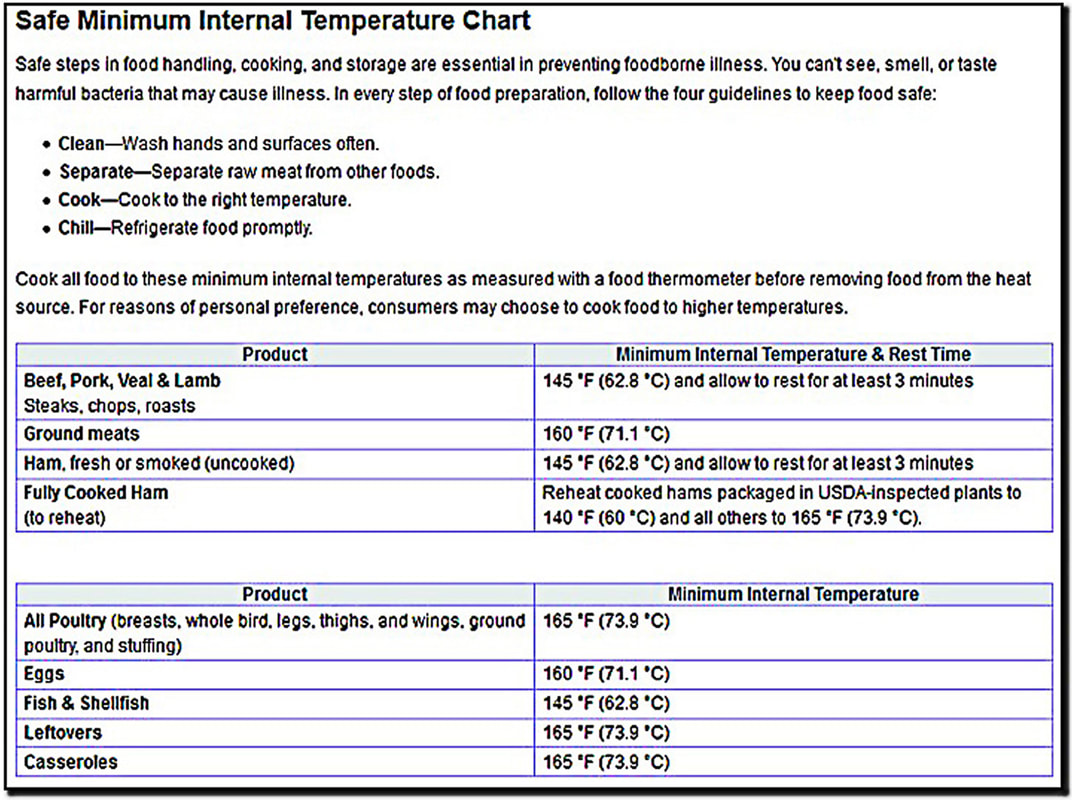|
Forget all the silly hype about “chemicals” in your food. Food poisoning can, in fact, kill you! According to the CDC, roughly 48 million Americans get sick from food-borne illness each year; 128,000 people go to the hospital and 3,000 die annually from food-borne illness outbreaks. In 2013 the CDC evaluated nearly 4,600 food-borne disease outbreaks from 1998 to 2008 with information on both the specific food causing the outbreak and the specific type of illness. They found that food-borne illness is accounted for in 17 food categories:
Food handlers who don’t wash their hands properly are often to blame for norovirus and other outbreaks. Other culprits are people in their own kitchens. Most people are blissfully unaware of the dangers of bacterial contaminants in food. Linda Larson of FoodPoisoningBulletin.com lists the following mistakes commonly made in the kitchen:
Cooking food after it has developed food-borne contamination may not help, either. Some contaminants produce toxins that live on in the food even after the original disease bacteria have been killed by heat.
According to the CDC, there are some 250 foodborne pathogens that sicken and kill people in the United States every year. Some of the most common include
REFERENCES: “Foodborne Germs and Illnesses,” Centers for Disease Control and Prevention, September 01, 2016, accessed April 06, 2017, https://www.cdc.gov/foodsafety/foodborne-germs.html. Kathleen Doheny, “Most Common Foods for Foodborne Illness: CDC Report,” Medscape, January 30, 2013, accessed September 21, 2017, http://tinyurl.com/Medscape-FoodPoison. J. A. Painter et al., “Centers for Disease Control and Prevention,” CDC: Emerging Infectious Diseases, March 2013, accessed September 21, 2017, http://tinyurl.com/CDC-FoodPoison2013.
0 Comments
Leave a Reply. |
Archives
July 2024
Categories
All
|

 RSS Feed
RSS Feed